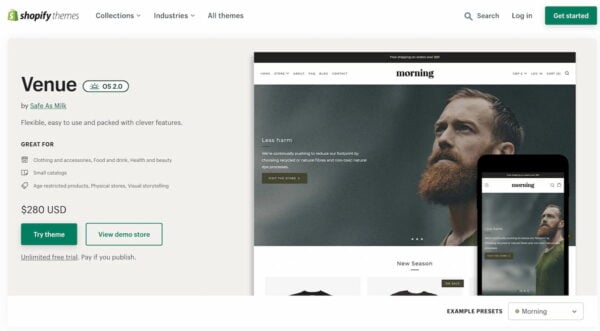WordPress is the king of blogs, while Shopify comes with a basic but competent blogging feature. Wouldn’t it make sense to simply use WordPress to build a blog and tie that into your Shopify store? While WordPress does give you more tools to create a perfect blog, combining these two is probably not worth the hassle. You would be running WordPress on a subdomain which isn’t always the best option. Unless you have particular hard-core needs, the ease of using the built-in blogging tool in Shopify probably makes a lot of sense for most people.
If you already have an excellent WordPress site, you can simply integrate your Shopify store with a plugin like WP Shopify. This does make handling your store a bit different from how you would typically do it. Primarily if you use any third-party apps, many of these won’t function correctly in this manner, due to the limitations of the Shopify API. Luckily, you can at least use Yoast SEO on WordPress and Shopify to optimize your store and site.

Yoast SEO for Shopify
Get more organic traffic by creating the best product and blog content and make your products eligible for rich results in Google. Plus, you’ll get access to our top-notch SEO courses and amazing support team (24/7). Take a look at the Yoast SEO for Shopify product page or get the app now!
How to pick a good Shopify theme
Your theme is an essential part of your online shop. The theme you choose influences so many things — from branding to user experience to conversions. Everything depends on how awesome your Shopify theme is. Luckily, there’s ample choice in the Shopify Theme Store, and many of these should function perfectly fine for your store. Let’s go over a couple of things you should look out for when choosing a theme:
- Determine what you want and need: Are you going to run a store with a single product, or do you want a theme that can handle thousands or more? The theme store has a handy selection of themes for stores with large and small catalogs. What type of design do you need? What options do you need?
- Figure out your budget: Themes in the Shopify theme store run from free to a one-time payment of a couple of hundred dollars. Check what you are willing to spend. Free works for some, but then you hardly get support from the developer. Paid themes often come with more options and tend to be better built.
- Check the themes in the marketplace: There are quite a few themes available, and Shopify has even structured these in several collections like the size of the catalog or the type of industry, like clothing or electronics. You can filter on different properties, like features you need for the product pages or what’s available on the homepage of a shop. Now, there are over 80 themes available in the Shopify Theme Store.
- Read the reviews: You are probably not the first one picking a theme, so it’s a good idea to read the reviews of people who worked with the theme.
- Check the support the developer offers: Every theme comes with documentation and support, but the level and quality of support differ from developer to developer. Read the documentation and check around. Don’t be afraid to ask your questions.
- Make sure the Shopify theme is lean and mean: Many themes want everything and appeal to every store owner. But that means that there’s bound to be stuff built in that you don’t need. Keep in mind that all those features come at a price. Try to find a theme that has low overhead and loads lightning fast.
- Try the demos and check out other stores that run the theme: The Shopify theme store offers demos for all the themes, and you need to check these out. Also, Shopify provides examples of stores that run the specific theme you are looking at. It’s a good idea to take a close look at those online stores and run these through their paces. For instance, run a performance test on web.dev/Measure and see how they do. You’d be surprised at the results.
- Check mobile-friendliness: As consumers increasingly use their mobile devices to shop, it’s essential that your online shop functions correctly. Again, the theme store gives you the possibility to see a mobile view of the theme.
- Test the user experience: The Shopify theme store also gives you a good idea of how users might experience the store. Click around, see the various layouts, check how images load, animations work, the structure of the menu, and how it all feels. You can also try out the theme on your store so you get an even better sense of how the theme feels and performs.
- Pay extra attention to the shopping cart: Does it feel like it wants customers to move through the process as quickly as possible? Or are there elements that take away focus? Other distractions? Is there room to expand the basic cart with upsells/cross-sells, promotions, and the like? Test your cart to see if you can reduce shopping cart abandonment rates.


No comments:
Post a Comment